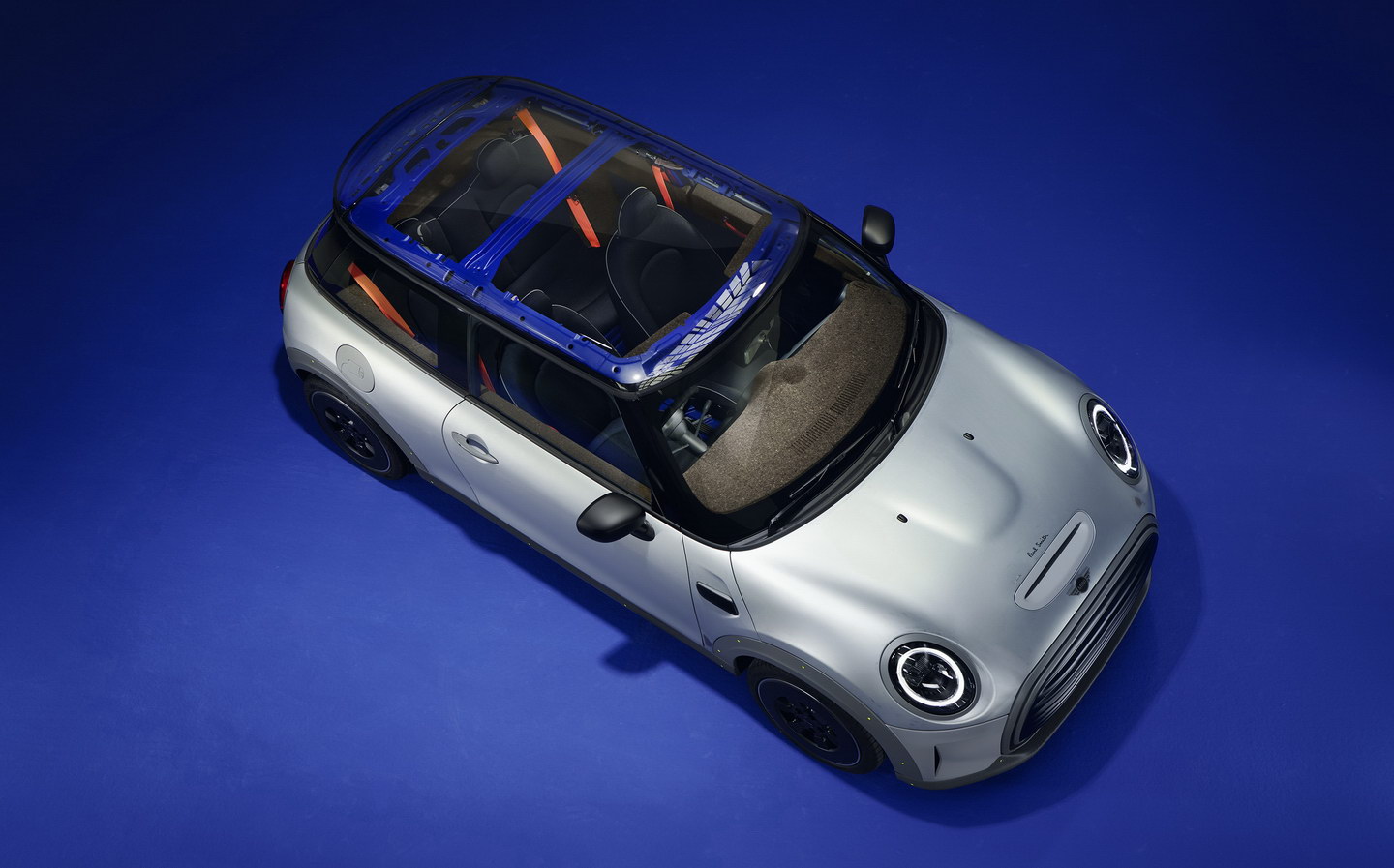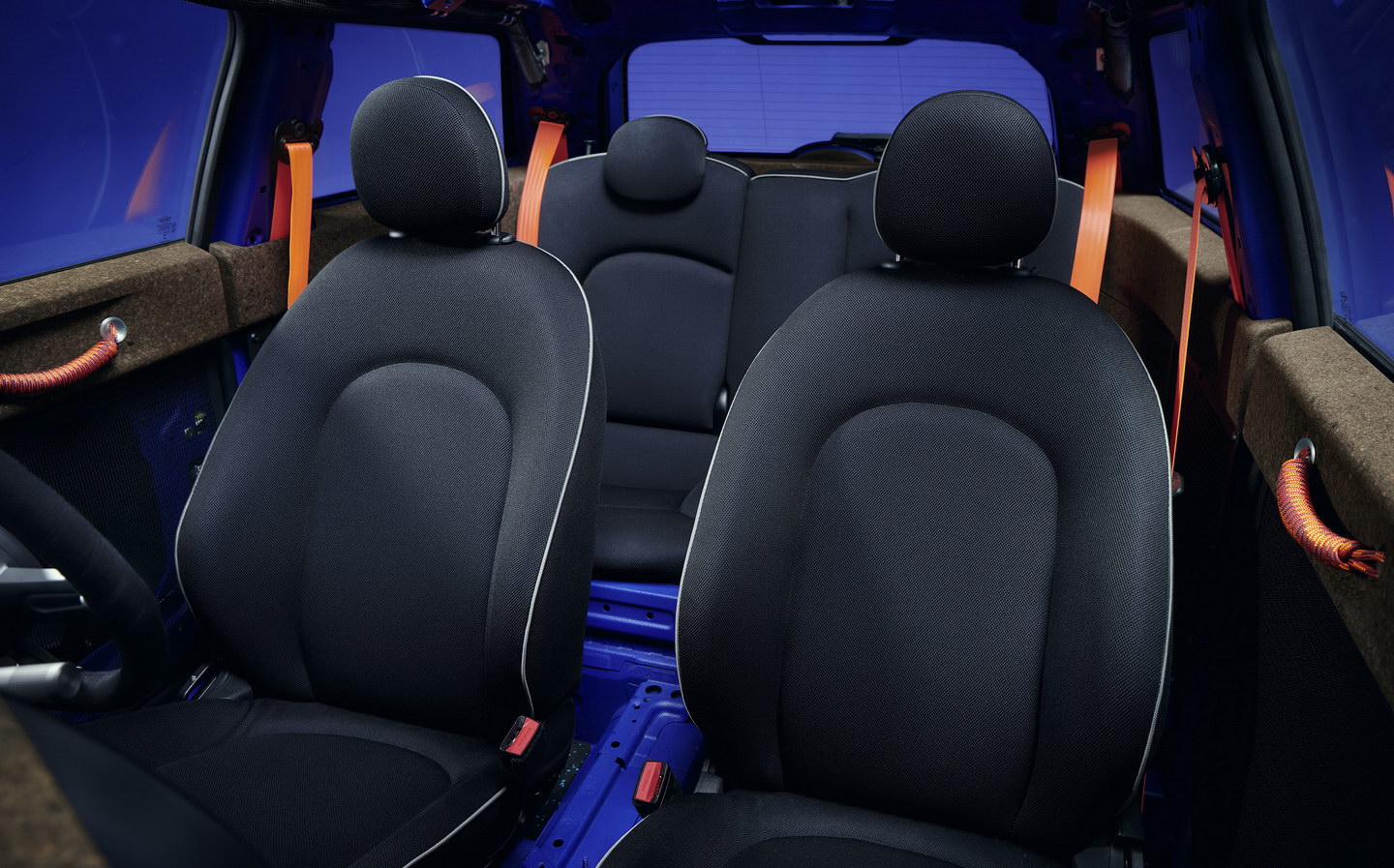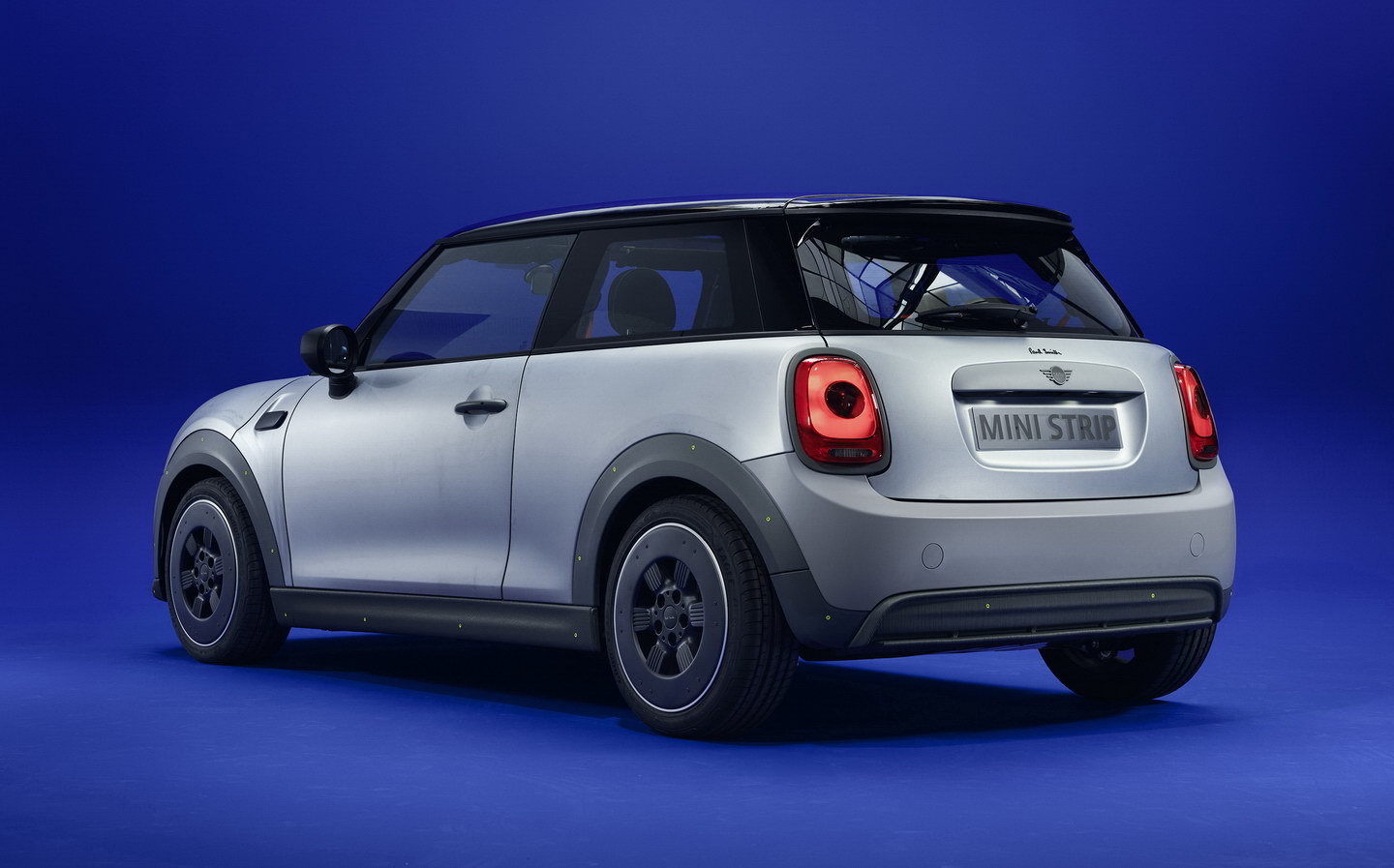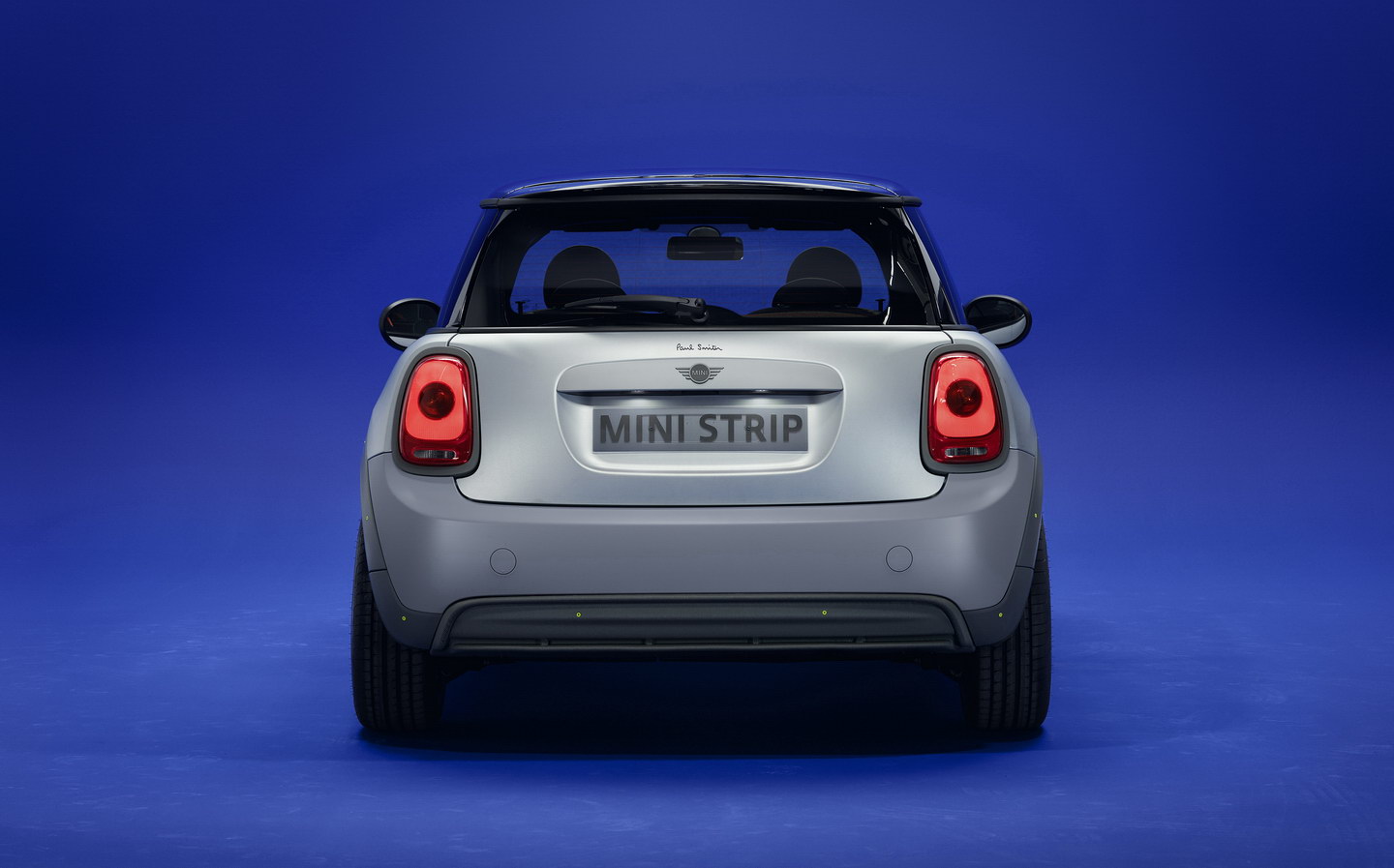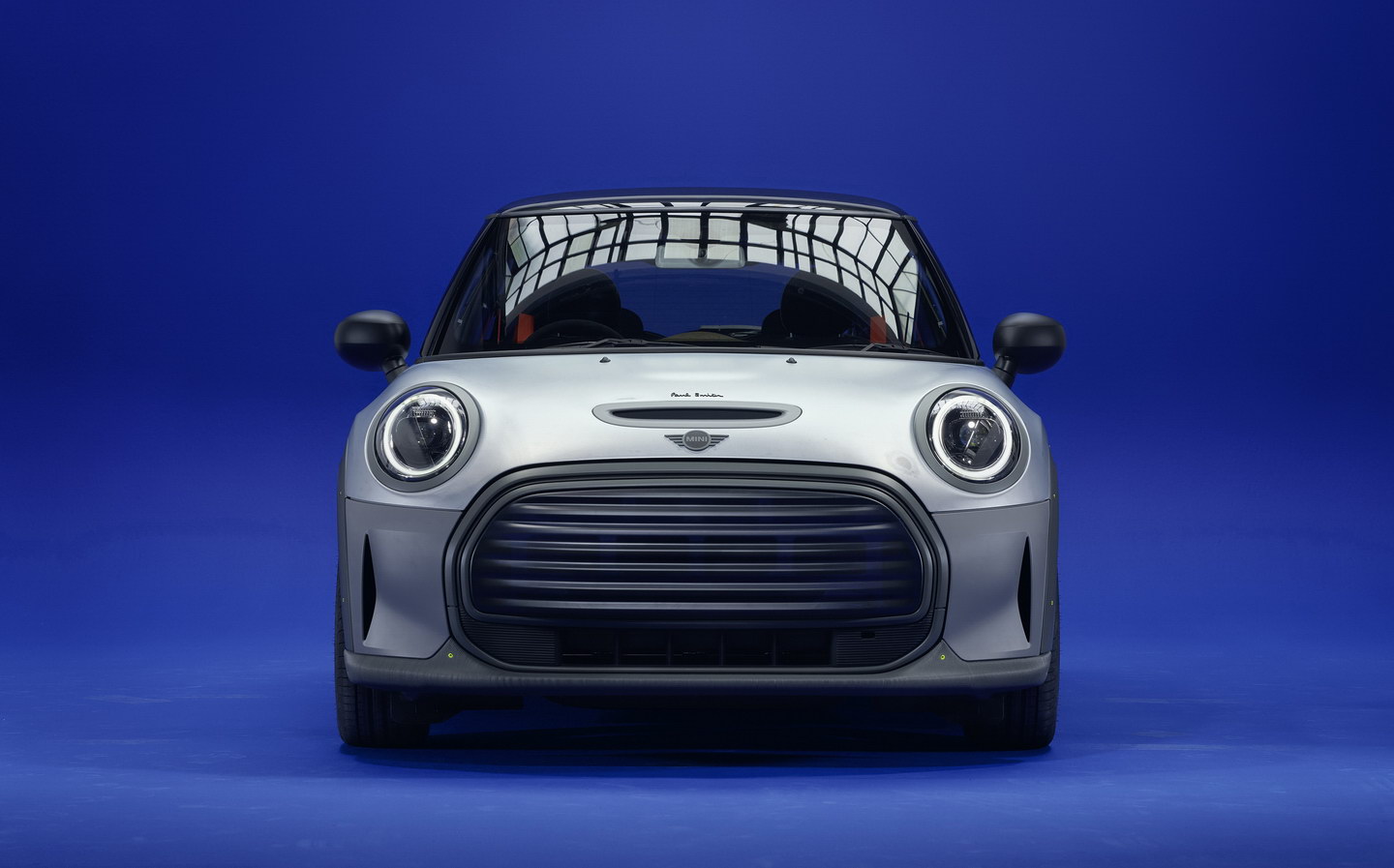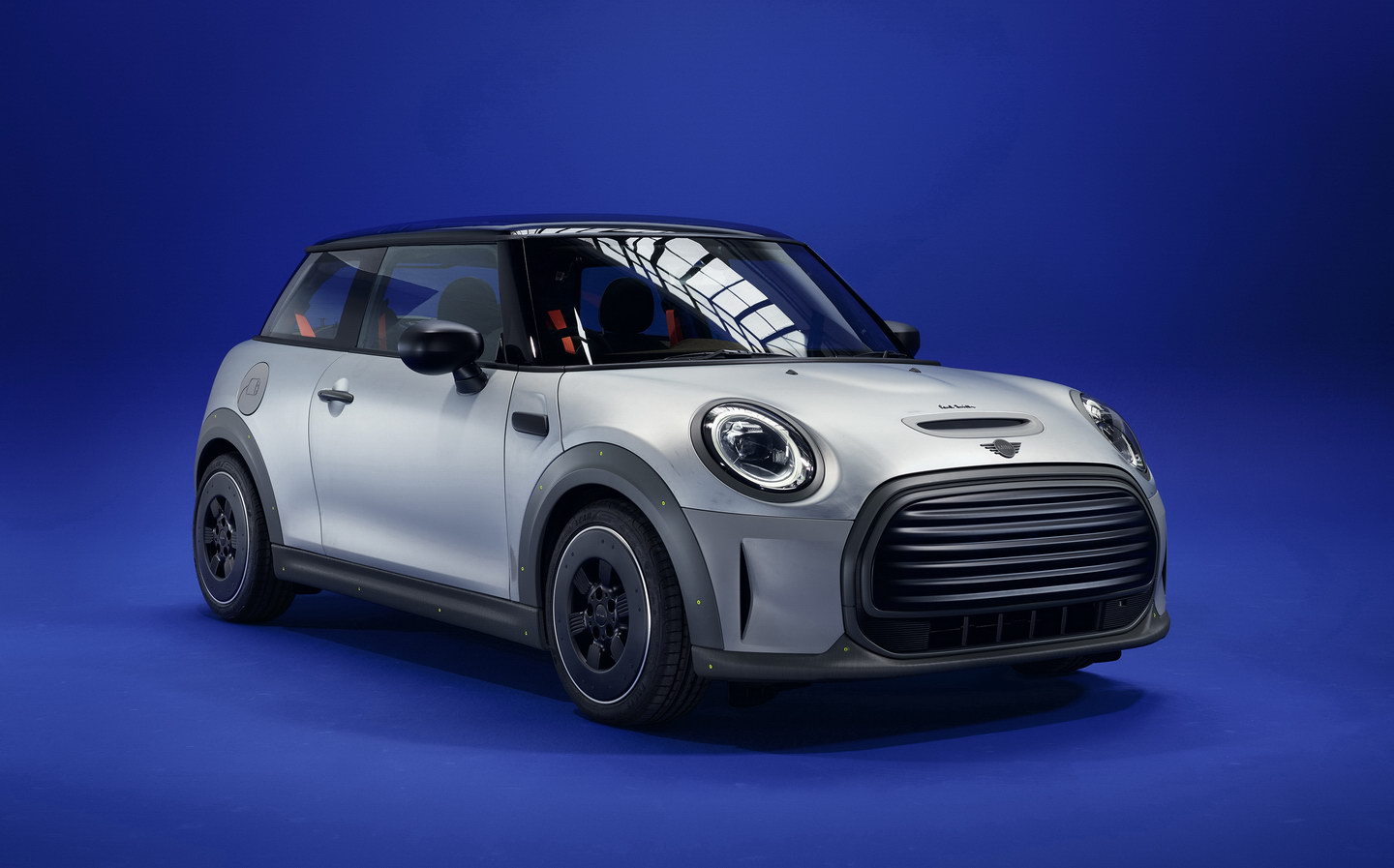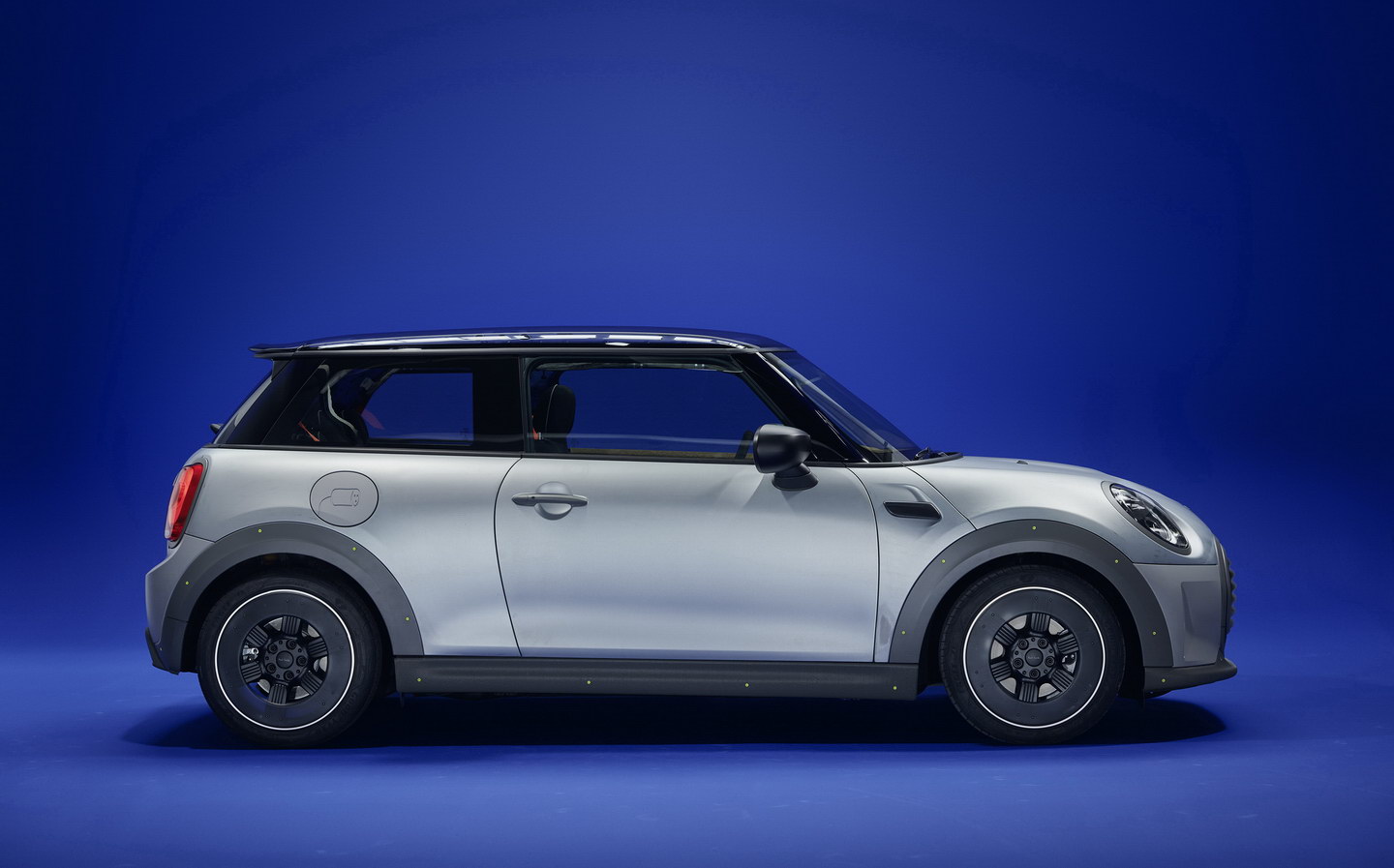Fashion designer Paul Smith reinvents the Mini Electric in one-off special edition
C'est ch-eco
THIS IS the Mini Strip, a one-off collaboration between Mini and British fashion designer Sir Paul Smith, based on the Mini Electric.
As the name suggests, it has been stripped back to the bare essentials, with Smith (below) introducing new elements that focus on the three themes of ‘Simplicity, Transparency and Sustainability’.

While the Mini’s basic electric running gear remains the same, including the 181bhp electric motor up front, nearly every other element has been changed in some way.
The internal construction of the car’s bodyshell has been painted a distinctive metallic blue, while the exterior panels have been left unpainted and even display the grinding marks left during the car’s manufacture.
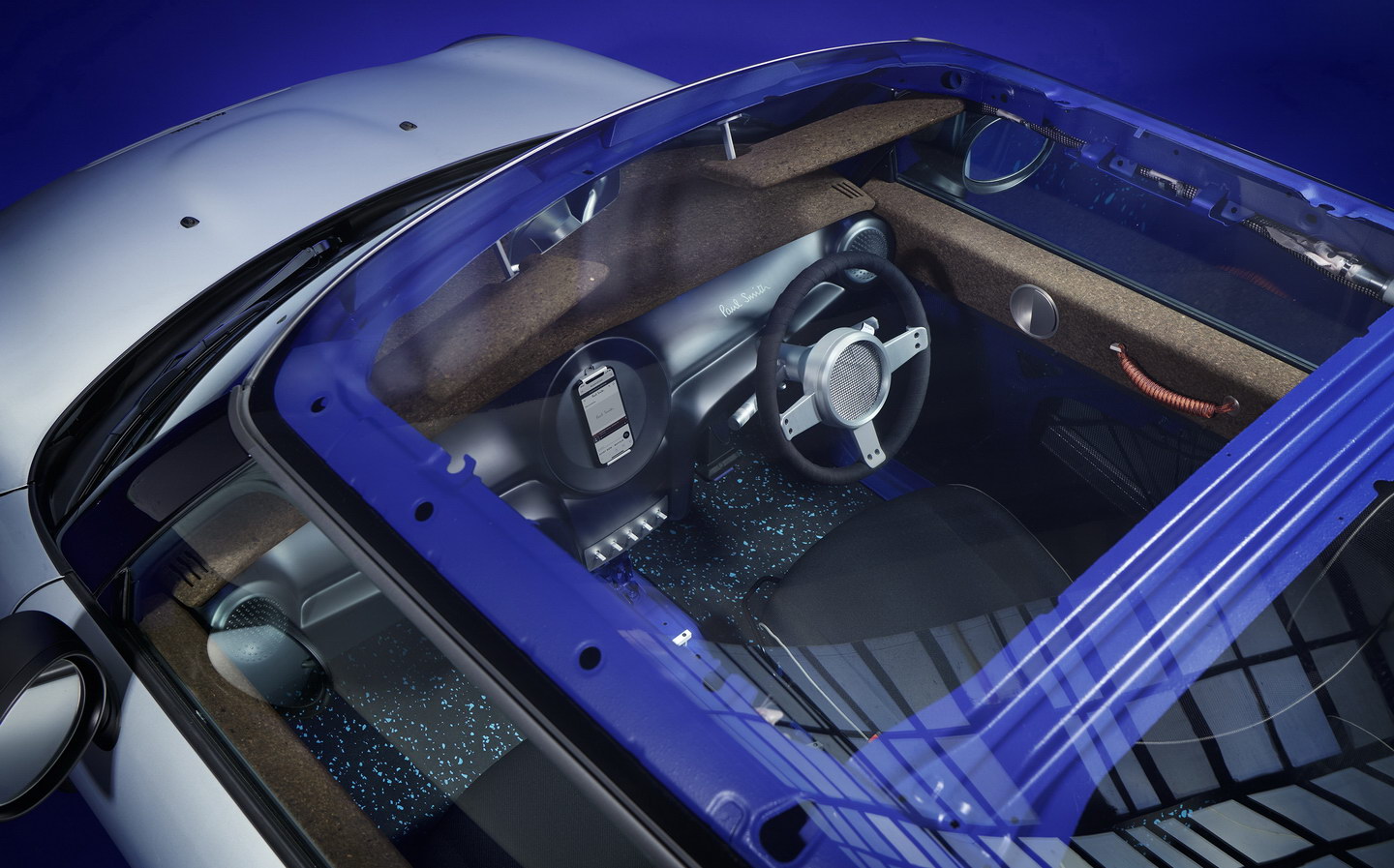
A thin layer of clearcoat has been added to protect the galvanised steel, but the bare metal has been described by Smith as “the perfect imperfection”.
The clear roof panel made from recycled Perspex exposes the car’s metalwork beneath, while the blank grille up front and aerodynamic wheel discs are also made from recycled Perspex.
Mini expects the changes to boost the EV’s range, although no figures have been quoted for the Mini Strip – the regular Mini Electric can cover up to 141 miles on a charge according to WLTP tests, though during a long-term test we found the range was not much more than 100 miles between charges.
The hatchback’s familiar black plastic wheelarch extensions are attached with exposed screws, while elements of the bumpers and plastic trim pieces have been 3D printed.
It’s inside where a number of wholesale changes have been made. The basic dashboard is the only element of the Mini Strip that’s carried over from the standard car, while most of the plastic trim has been ditched so that the car’s blue-painted frame is visible.
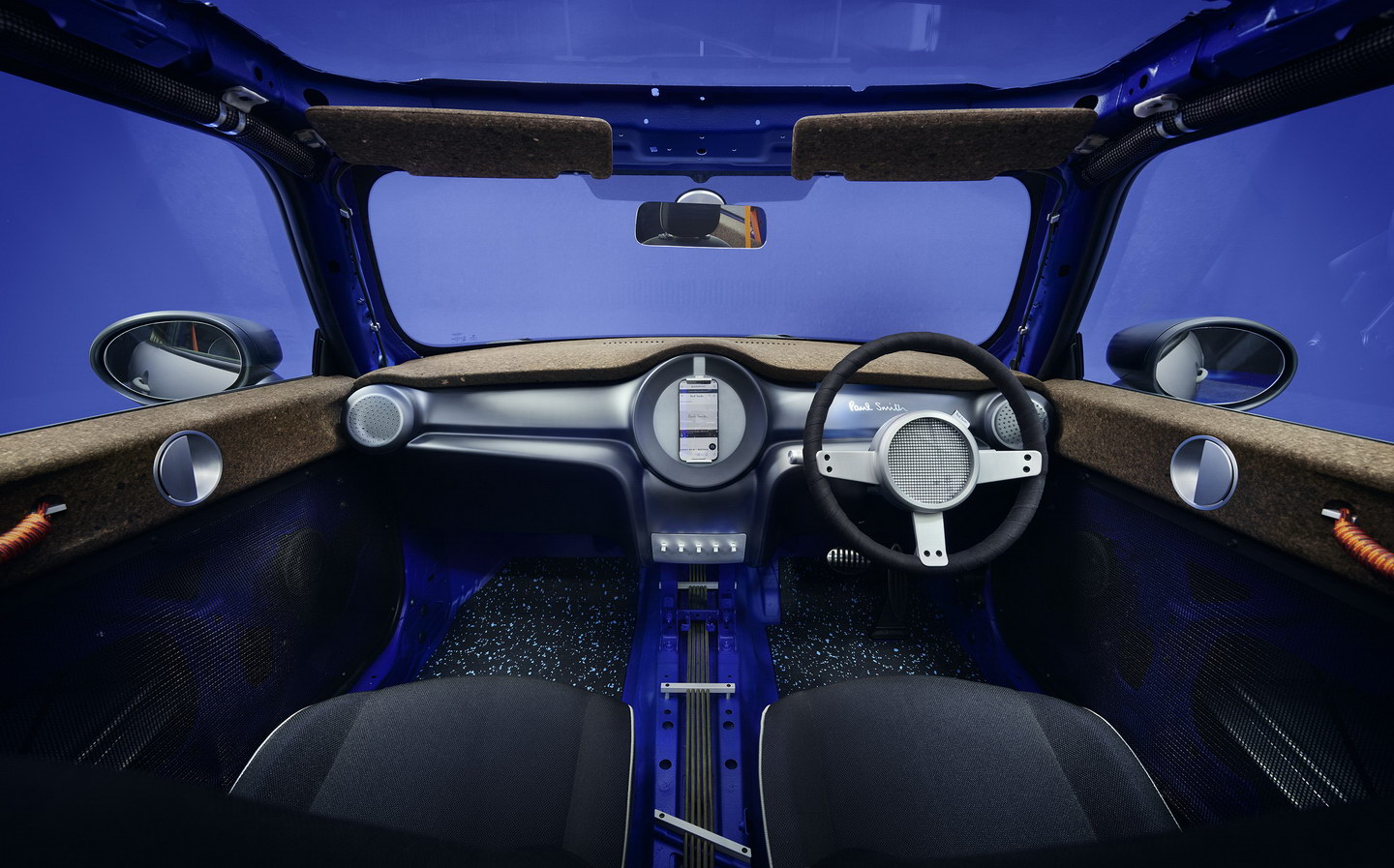
Components of the car that are normally hidden are also exposed, including the car’s wiring and airbags.
Where parts of the car’s interior needed to be reinstated, Smith has used sustainable materials. The dashboard features a transparent smoked glass section with the Paul Smith logo, while Mini’s large circular central instrument display has been replaced by a simplified insert with a dock for a smartphone, which then becomes the car’s control centre.
There’s no leather or chrome inside, and the seats are trimmed in knitted fabric. This is what’s called a mono-material design, which means that the fabric is fully and easily recyclable at the end of its life.
Recycled materials are also found in the floor mats, which are multicoloured because they are made from recycled rubber.
The door trims are now made from fabric mesh to expose the window mechanisms, while orange climbing rope is used for the door pulls. The door shoulders, as well as the parcel shelf and dashboard topper, are made from recycled natural cork. Cork has the potential to replace foamed plastic in the assembly of new cars.
Finally, the steering wheel is trimmed in bicycle-style handlebar tape, while the driver’s airbag is visible behind a mesh-finished steering wheel boss.
“For me, the Mini Strip shows in an impressive way that Mini and Paul Smith share the same bold way of thinking about the future in terms of innovation and design – and together we create more,” said head of Mini Design, Oliver Heilmer. “Paul asked essential questions right at the start of the design process with his non-automotive and therefore fresh perspective. We are proud to have developed such a strong character statement together.”

The classic Mini received a special Mini Paul Smith edition makeover in 1998, two years before new Mini was launched. It was available in blue – or black and white in some markets – though the designer also famously created a one-off with 86 different coloured stripes covering the body.
Tweet to @ST_Driving Follow @ST_Driving
- After reading about Mini joining forces with fashion designer Paul Smith to create a one-off sustainability special, you may be interested in this recent story about a driver jailed for using a laser jammer to block speed cameras
- Read how Mini is to end sales of plug-in hybrids
- Check out the Mini Urbanaut, the self-driving living room on wheels


